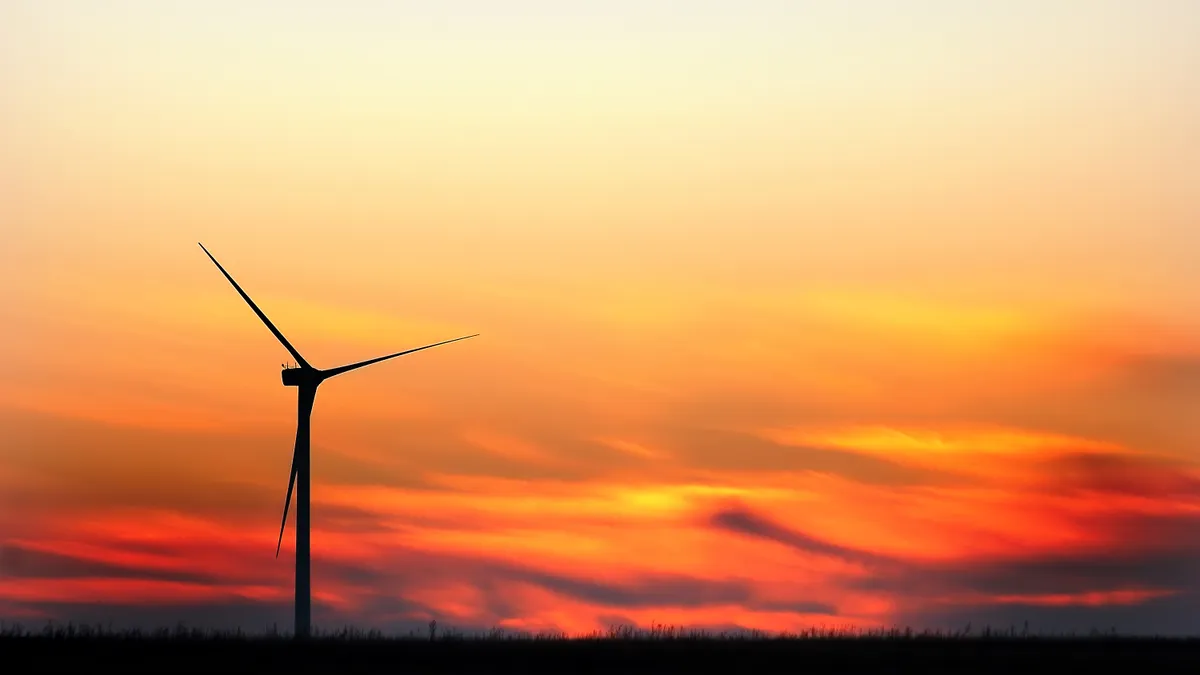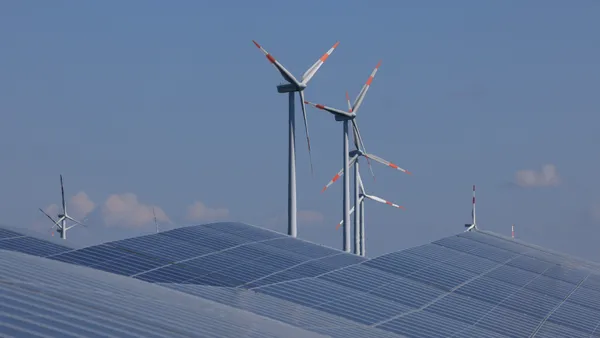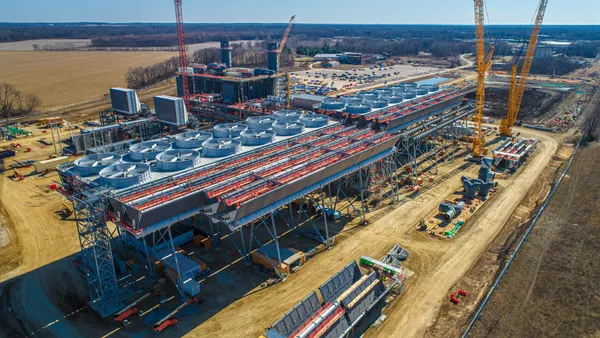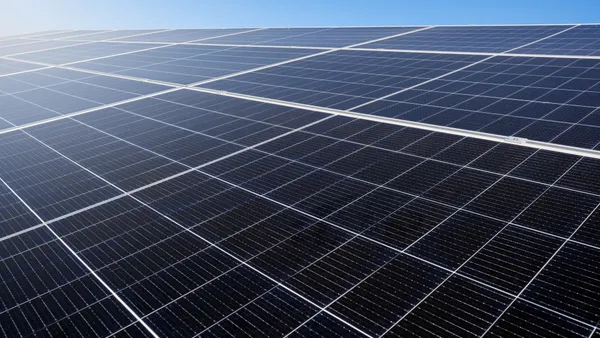Clarification: A previous version of this article reported that the Power Company of Wyoming had halted development of its wind farm. A spokeswoman for the company wrote to clarify that the company is still moving forward with plans to build the farm, but is uncertain when or even if it will begin construction.
A previous verison of this article also stated Wyoming was the only state to tax wind production. However, that is incorrect as South Dakota also has a tax in place for wind farms 5 MW or larger.
Dive Brief:
- Power Company of Wyoming (PWC) has been working towards development of the largest wind farm in North America for nine years, but a legislative debate over raising tax increases for wind farms has put the project at risk, according to Wyoming Public Radio.
- Wyoming Public Radio reports that PCW's Ryan Jacobson told a renewable energy summit hosted by the University of Wyoming that construction plans are on hold while the state makes a decision on wind tax rates.
- In an email to Utility Dive, PWC spokeswoman Kara Choquette said the company is still moving forward with plans to build the farm, but is uncertain when or if it will begin construction.
Dive Insight:
Wyoming's debate over wind energy taxes, and whether to raise them, has introduced uncertainty into the development of one massive wind project.
Wyoming is one of the few states to tax wind generation, a $1/MWh tariff which raised $3.8 million in 2015. An increase could go towards helping the state deal with a budget shortfall.
"The advantage that Wyoming has over its neighbors on wind resource is starting to erode," Jacobson said, Wyoming Public Radio reported. "And other states are moving in closer. So the thought that no matter what the tax level is, development will come here, I think that time is passing."
The radio network ended its brief report noting the company had put its construction plans "on hold until the wind tax issue is resolved."
PCW parent Anschutz Corp. began developing the project in 2007. A project timeline on its web site does not mention suspending development, and notes the last project milestone was a draft environmental impact statement for an initial phase, issued by the U.S. Fish and Wildlife Service in April.
If completed, the Chokecherry and Sierra Madre Wind Energy Project would have a nameplate capacity of 3,000 MW.
Wyoming is still considering how high to raise wind taxes, and Rep. Michael Madden, co-chair of the Revenue Committee, has indicated he wants wind producers to pay comparable tax rates to oil and gas developers.
PCW, however, has argued that the total taxes paid by wind developers are much higher than the $1/MWh production tax currently on the books. Last month, the company told legislators that after property, sales and use taxes, generation taxes, and BLM federal royalties, the project would be paying about $4.76/MWh. Of that, $3.91/MWh comes from Wyoming state taxes, a rate the wind developer says is already higher than those paid by fossil fuel generators.















